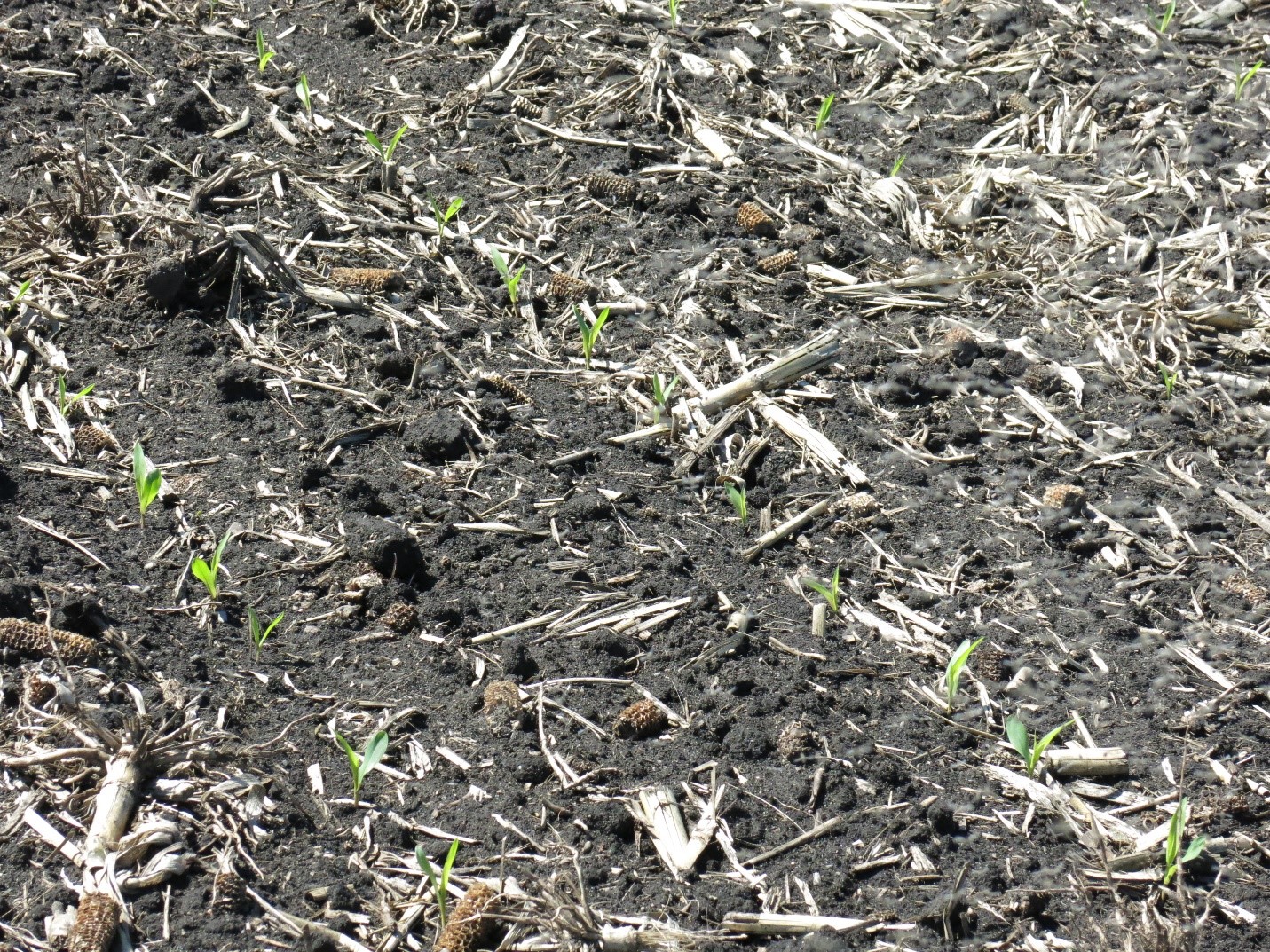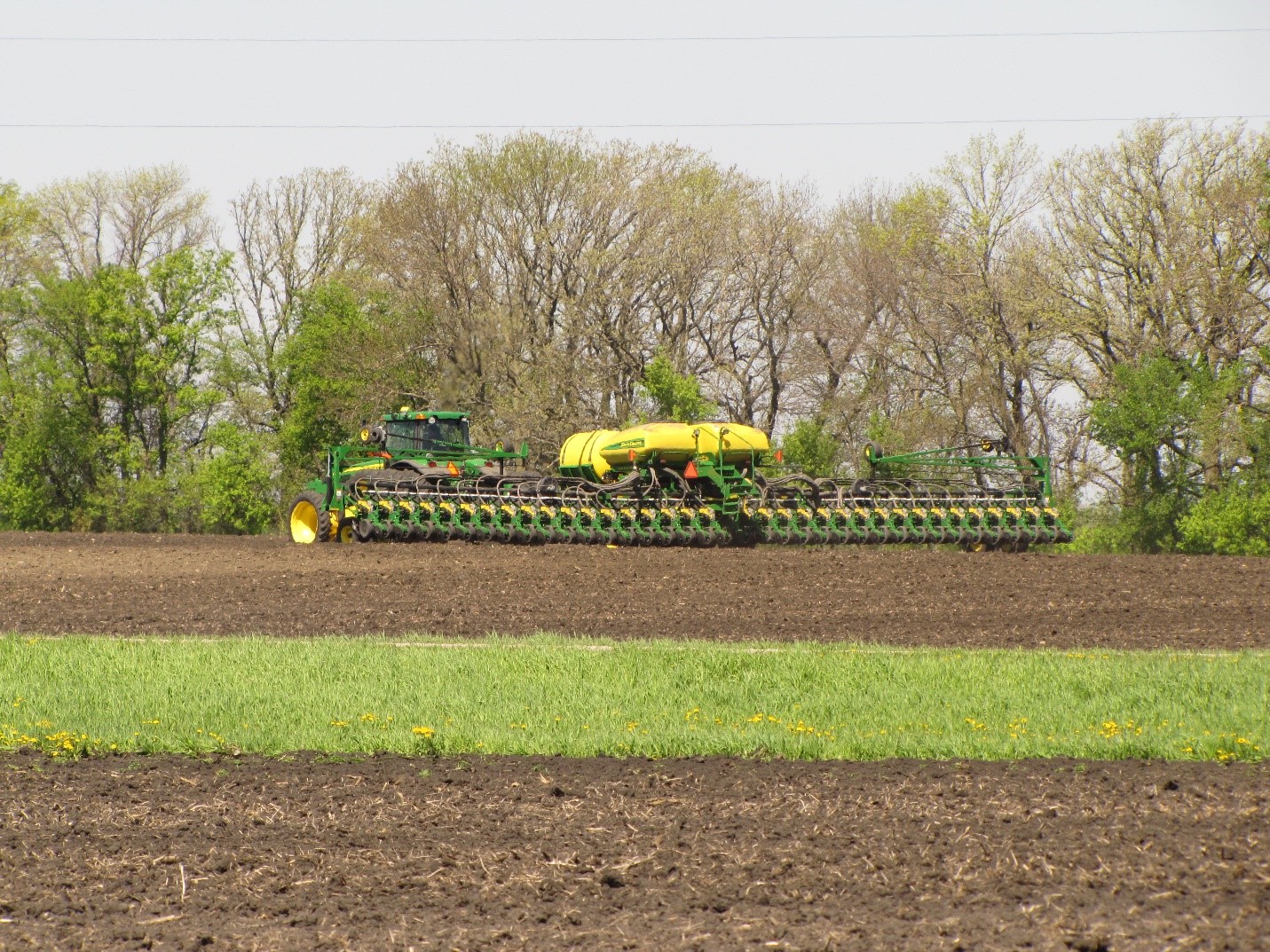This the forth post in the Gorans Blog Series about the Gorans Discovery Farm Project. You can read the previous posts here.
How do nutrient management practices affect yields?
A Fertilized and Unfertilized Field.
In the last post, we looked at runoff from the City Stormwater site and the Fertilized Field site and saw 46% runoff from the City of Willmar and 30.5% from the Fertilized Field. Looking at the average drainage over seven growing seasons (2007-2013), we found that the Fertilized Field and Unfertilized Field had similar amounts of drainage per acre due to the similar topography, tillage practices, drainage systems, and soil types. In this study, fertilization did not significantly affect drainage amounts.
For the Fertilized and Unfertilized Fields, the crop planting sequence started with soybean in 2007 followed by two years of corn. Soybean was planted again in 2010 followed by three years of corn. The Unfertilized Field did not have any soil amendments applied since the fall of 2005. For the corn crop in the years following the soybean crop in the Fertilized Field, turkey manure was applied based on manure N content and supplemented with commercial fertilizer. For all the other corn years in the Fertilized Field, commercial fertilizer was used. Specific rates and times of manure and fertilizer application can be found in this blog. On average 149.4 lbs N/A, 66.6 lbs P2O5/A, and 68.0 lbs K2O/A were applied yearly to the corn crop. No amendments were added during the soybean rotation.
Tillage practices varied depending on the crop. For the Fertilized Field following soybeans, manure was incorporated with a chisel plow. After first year corn, a moldboard plow was used to incorporate fertilizer in the fall. After second year corn, fields were fall chisel plowed. All fields were tilled in the spring with a field cultivator to break up soil clods prior to planting.



Comparing yields of the Fertilized and Unfertilized Field.
Corn was planted at a planting density of 33,500 seeds per acre with 22 inch row spacing on both fields. As expected, we found the corn yields were significantly lower each year on the Unfertilized Field, most likely due to insufficient nitrogen supply. On average, 69.4 fewer bushels of corn per acre were harvested from the Unfertilized Field compared to the Fertilized Field (Table 1).
Table 1: Crop yields for the Unfertilized and Fertilized Fields.
| Crop | Year | Unfertilized Field Yield (bu/ac) | Fertilized Field Yield (bu/ac) |
|---|---|---|---|
| Soybean | 2007 | 52.3 | 52.0 |
| 2010 | 61.6 | 50.0 | |
| Average | 57.0 | 51.0 | |
| Corn | 2008 | 139.9 | 196.0 |
| 2009 | 108.9 | 208.1 | |
| 2011 | 129.0 | 146.8 | |
| 2012 | 108.9 | 186.9 | |
| 2013 | 72.0 | 168.0 | |
| Average | 111.8 | 181.2 |
Soybeans were planted at a planting density of 133,450 seeds per acre with 22 inch row spacing. We found the soybean yields were slightly higher (≈6 bushels per acre) on the Unfertilized Field (Table 1). For the soybeans, a lack of nitrogen in the soil is not an issue, because soybeans convert atmospheric nitrogen into a form usable by the plant. These results provide further support that nitrogen is the limiting factor in the Unfertilized Field for corn.
In our next posts in the series, we will compare the sediment and nutrient runoff from the Fertilized Field, Unfertilized Field, and the City Stormwater site. The lower corn yield of the Unfertilized Field becomes important in understanding the issues at stake.
- Gorans Blog Series: Looking at the watershed scale. - November 6, 2017
- Gorans Blog Series: Nitrogen movement. - October 23, 2017
- Gorans Blog Series: Sediment and phosphorus movement. - October 2, 2017